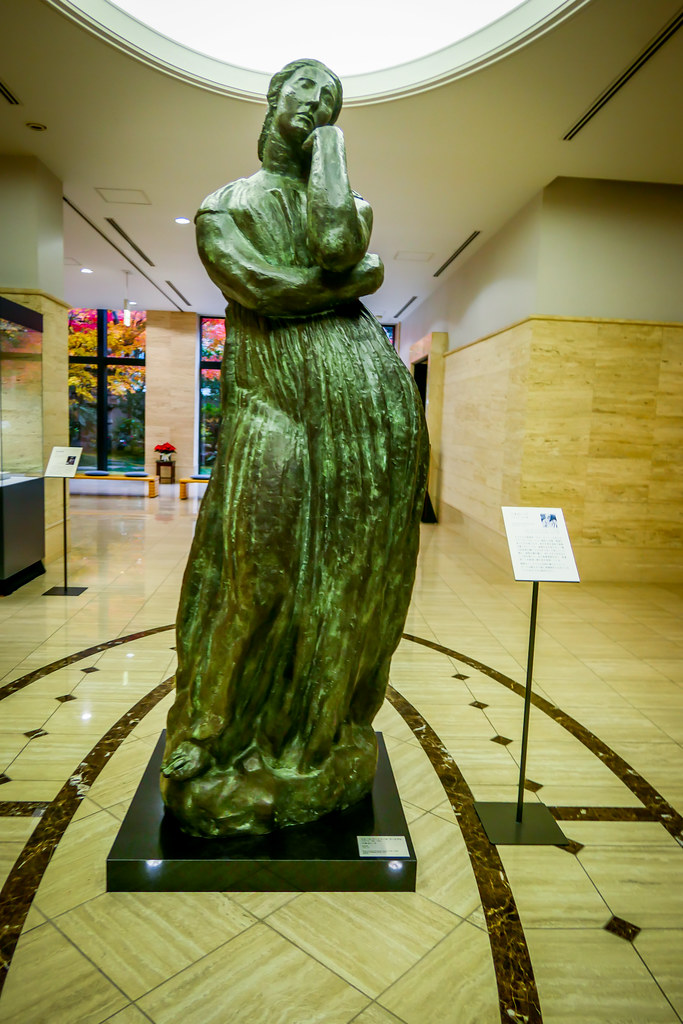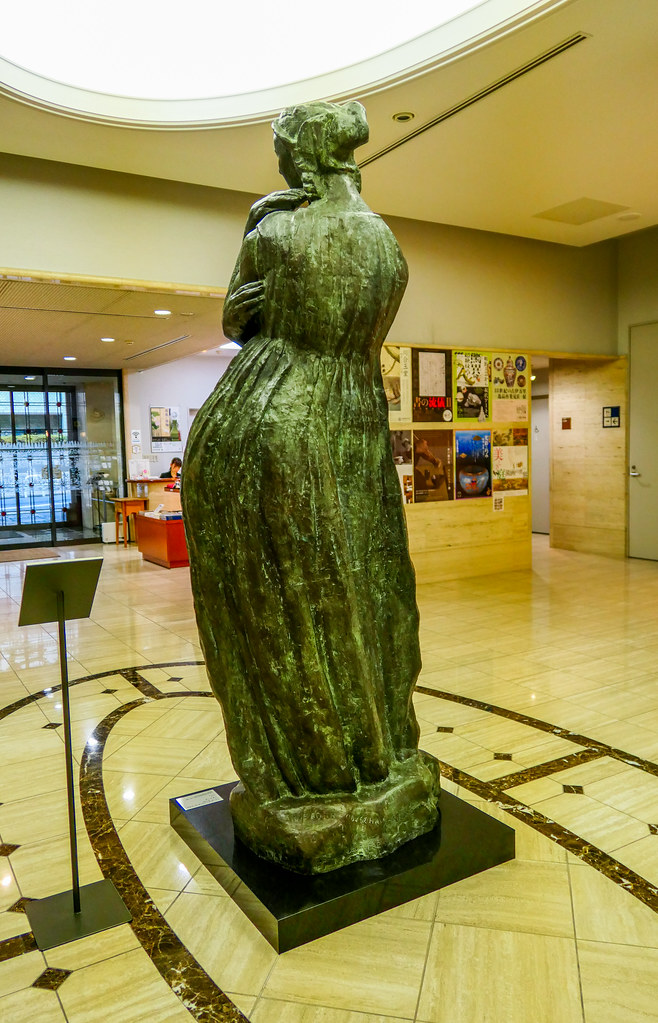
One of my favorite sculptors is Emile-Antoine Bourdelle, an influential and prolific French sculptor, painter and teacher.
From his dark sketches (inspired by classic and contemporary literature) to his earlier career to the amazing sculpture he would make a few years later through the early 1900s.
One thing I found fascinating about Bourdelle is that instead of creating small models, he would practice a major project with a maquette and refine the sculpture through stages.
And one of his most well-known is “Penelope” which he created in 1912.
In Homer’s “Odyssey”, Penelope is the wife of Odysseus (the legendary Greek king of Ithaca). When Helen of Troy was abducted, Menelaus, King of Mycenaean Sparta and Helen’s husband, called upon her other suitors to honor their oaths and help him retrieve her. This would lead to the Trojan War.
Odysseus did not want to go into war because an oracle had prophesied that if he went, he would not return home for a very long time. So, Odysseus avoided going to war by saying he has gone insane.
Unfortunately, Menelaus brother Agememnon sent Palamedes to Ithica to retrieve Odysseus and to disprove Odysseus’ madness (as Odysseus had promised to defend the marriage of Helen and Menelaus) and places his infant son Telemachus in front of the plow, while he was sowing his fields with salt. Odysseus avoids hurting his son and thus showing that he is not mad. This would lead to the grudge that Odysseus would have towards Palamedes.
And many are familiar with his idea of creating the “Trojan Horse”. But this war would have Odysseus away from his family for 20 years and Homer’s “Odyssey” would be about Odysseus trying to return home. And his return home would be perilous and no matter how much he tries to get back home through those 20-years, there was always some major setback.
As for Odysseus’ wife Penelope, for 20 long years, she shown fidelity to her husband, despite Odysseus being absent for so long and many suitors wanting to be Penelope’s husband. She remained faithful.
“Penelope” was developed in four stages through two small studies which he began back in 1905 and 1907. Bourdelle would then create a half-sized version in 1909 before completing it in 1912, in time for it to be exhibited at the Salon de la Societe Nationale des Beau Arts. And these studies are currently featured at the Australian National Gallery with the exception of the 1909 version.
In the first study, the 1905 version of “Penelope” features her holding a spindle. The spindle represents in how in the story, she would tell her suitors that she could not choose between them until she finished work on a tapestry. This study was cast in bronze by the Valsuanni Foundry in Paris and in 1977, an edition of eight and two artist proofs were created.
In the second study, the 1907 version has the spindle removed from “Penelope” and the height was increased by 2 feet. This study was cast in bronze by the Susse Foundry in Paris in 1978 and and eight editions and two artists proofs were created.
The finalized version, “Penelope” of 1912 was cast in bronze by the Susse Foundry in Paris in 1978 in eight editions with two artist’s proofs. It was said that the facial features of Penelope is modeled after Bourdelle’s first wife, Stephanie Van Parys. But when an undated drawing was found that had the following inscribed: “Sevastos devant les devins Hindous” (Sevastos before the Hindu gods) with a similar pose to Bourdelle’s “Penelope” sculpture. And the figure in the drawing is of Cleopatre Sevastos, a pupil of Bourdelle back in 1905, who would become his second wife.
As for the bronze editions, they can be found in the Kroeller-Muller Museum, Otterlo, The Netherlands; the Israel Museum, Jerusalem; the Honolulu Academy of Art, Hawaii; the Matsuoka Museum of Art, Japan; Musée Bourdelle, Paris; and the collection of Madame Dufet Bourdelle, Nemours, France (I am not sure who was the eighth or who has the two artists proofs).
A second variant that was created in plaster, is located at the Musée Bourdelle, Paris.
I traveled to Shirokanedai in Minato to visit the Matsuoka Museum of Art which contains the art and sculptures owned by Seijiro Matsuoka who owned a trading firm, Matsuoka Shouten.
When Matsuoka turned 80-years-old, he decided to share his art collection to the public and he founded the Matsuoka Museum of Art at Shinbashi,Tokyo in 1975. He was planning to builda large museum nearby in Ryogoku but Matsuoka would pass away before fulfilling his dream.
His family would build a new museum at the site of his residence in Shirokanedai in Tokyo’s Minato ward and Matsuoka Museum of Art in Shirokane opened in April 2000.
Emile-Antonine Bourdelle’s “Penelope” welcomes visitors to the museum once they enter the building through the front. And I feel the sculpture is perfect.
As Penelope was no doubt a symbol of fidelity, she was also a person who was patient and waited a long time.
I have wanted to see “Penelope” for a long time and being in Japan, this was a perfect chance for me to visit the Matsuoka Museum of Art and finally see “Grand Penelope”. My first time in Japan was in 1999 and so, it was nearly 20-years since I have come to see Penelope and for me, the timing was perfect. Seeing Penelope once I walked in from the door was an amazing feeling that after all these years, there she is.
Granted, I still want to visit Musée Bourdelle, Paris but this moment of seeing the bronze sculpture is something that I will forever remember in my lifetime.



